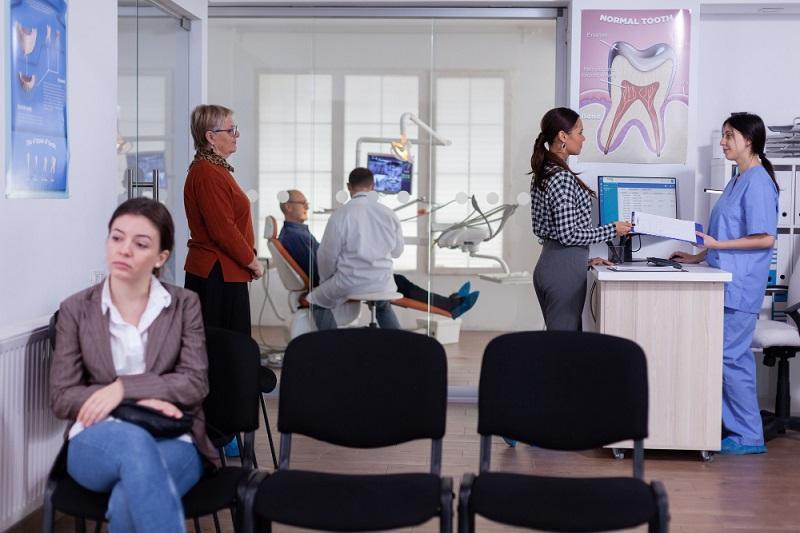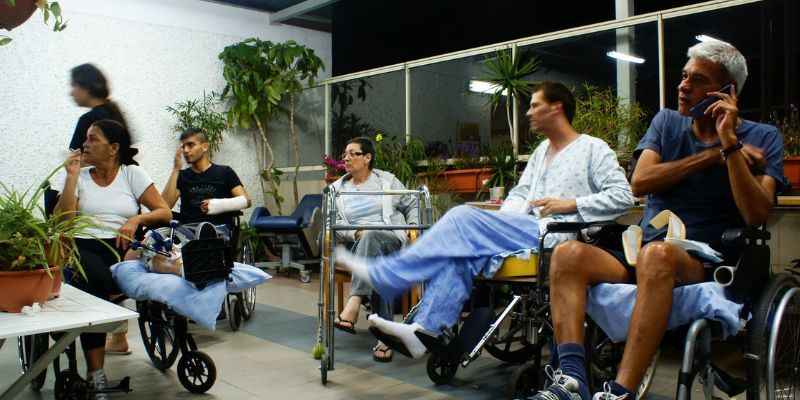Emergency room (ER) wait times refer to patients’ time awaiting medical attention in the ER setting. This critical aspect of healthcare delivery is crucial to patient experience and outcomes.
Timely medical care in emergencies is paramount. How Long Is Too Long to Wait in ER? This is a crucial question, as extended delays can have profound implications for patient well-being.
Swift access to appropriate treatment can significantly impact the prognosis and recovery of individuals in urgent need.
This article will delve into the significance of minimizing ER wait times and explore potential solutions to enhance patient care.
Factors Influencing ER Wait Times
Long emergency room wait times have become a prevalent concern in healthcare systems worldwide. Various factors contribute to patients’ extended durations in the ER before receiving necessary medical attention.
Understanding these elements is crucial in addressing the issue and improving emergency care’s overall efficiency, quality, and patient experience. This section will dive into the key factors influencing ER wait times.
1. Patient influx
Several key factors can influence the duration of a patient’s wait in the emergency room. Firstly, patient influx plays a significant role. Hospitals in densely populated areas experience higher volumes, potentially leading to longer wait times.
Moreover, the impact of location and population density must be considered, as urban centers often face more substantial demand for emergency services.
Additionally, seasonal variations can exacerbate wait times, with certain times of the year experiencing heightened medical needs.
Understanding these elements is crucial in addressing how long a hospital can keep you waiting and working towards reducing average ER wait times for optimal patient care.
2. Severity of Cases
The severity of cases plays a pivotal role in determining how long patients wait in the emergency room. This is often addressed through the triage system, a critical component of queue management for healthcare.
Triage System and Prioritization:
- It categorizes patients based on the urgency of their medical needs.
- Critical cases receive immediate attention, while less severe cases may experience longer wait times.
Understanding the impact of the triage system on wait times is crucial for providing effective and timely care.
It ensures that those in dire need receive prompt attention, even if it means longer waits for less critical cases. This balance is essential for optimal patient care and efficient queue management in the ER.
National and Regional Averages
Statistics on average ER wait times are crucial indicators of emergency room efficiency. Nationally, the average wait time stands at 145 minutes. However, this figure varies significantly by region.
Urban areas benefit from higher healthcare facility density, resulting in shorter wait times, averaging around 104 minutes. Conversely, rural areas may experience considerably longer waits, sometimes exceeding 200 minutes.
Regional Variations and Disparities:
Regional differences play a pivotal role in shaping emergency care experiences. These disparities are influenced by population density, healthcare infrastructure, and socioeconomic conditions.
Recognizing and addressing these disparities is essential for ensuring equitable access to timely healthcare services for all individuals, regardless of their geographical location.
Benchmarking Against Recommended Standards:
Evaluating emergency room operations against recommended standards is crucial. These standards suggest that ER wait times should ideally be below 45 minutes.
Many hospitals are diligently working to meet or surpass this benchmark, emphasizing the collective commitment to enhancing the efficiency and quality of emergency care on a national scale.
Consequences of Prolonged Wait Times
Prolonged wait times in the emergency room can have far-reaching consequences beyond the inconvenience of a delayed medical evaluation. These extended waiting periods can affect patient outcomes and overall healthcare system efficiency.
Let’s explore in detail the various consequences that arise when patients are made to wait excessively for the care they urgently require. Understanding these repercussions is essential for healthcare providers and policymakers in enhancing emergency room experiences and outcomes.
1. Impact on Patient Outcomes
Lengthy wait times in the emergency room can significantly affect patient outcomes. Delayed care can exacerbate existing medical conditions, potentially leading to more severe complications.
For instance, a patient with chest pain may experience worsened cardiac outcomes if timely intervention is delayed.
Case studies, such as the collaboration between KPK’s Ministry of Health and Wavetec, demonstrate how queue management solutions can significantly reduce wait times and improve patient satisfaction.
In this case, Wavetec’s Electronic Queue Management Solution reduced waiting times, increased efficiency in managing patient queues, and improved overall healthcare services.
Understanding how long is too long to wait in the ER is crucial for safeguarding patient well-being and ensuring timely care.
2. Psychological Effects on Patients and Their Families
Long wait times in emergency rooms can have profound psychological effects on patients and their families.
The prolonged anticipation of medical care can lead to heightened anxiety, stress, and feelings of helplessness. Patients may experience a sense of vulnerability while families endure worry and frustration.
Additionally, the uncertainty surrounding the wait can exacerbate emotional distress. These psychological impacts emphasize the critical need to address long wait times in emergency rooms to ensure physical well-being and the mental and emotional well-being of patients and their loved ones.
Strategies to Reduce ER Wait Times

Premier ER wait times are essential for ensuring timely and effective emergency care. Understanding why emergency rooms take so long is the first step in implementing strategies to mitigate extended wait times.
In the following section, we will examine a range of tactics aimed at streamlining the ER process and enhancing patient experiences.
1. Hospital Initiatives
Hospital initiatives play a pivotal role in tackling extended ER wait times. Implementing advanced triage systems, supported by business analytics, enables a more precise assessment of patient urgency.
Additionally, augmenting staffing levels and allocating resources strategically ensures a more efficient workflow.
These proactive measures enhance the overall responsiveness of emergency departments, ultimately reducing wait times and improving the quality of care provided to patients in need.
2. Community Education on Appropriate ER Utilization
Community education on appropriate ER utilization is vital to alleviating overcrowding and long wait times. Individuals can make more informed decisions about their healthcare needs by educating the public about when to seek emergency care versus utilizing primary care or urgent care options.
This empowers communities to access the right level of care promptly, easing the burden on emergency departments and ensuring that those with critical emergencies receive timely attention.
3. Telemedicine and Its Role in Alleviating ER Congestion
Telemedicine offers a promising solution to alleviate ER congestion. Providing remote access to healthcare professionals enables timely evaluation and treatment for non-life-threatening conditions.
This reduces unnecessary visits to the emergency room, allowing medical staff to focus on critical cases.
Additionally, telemedicine enhances healthcare accessibility, particularly in underserved areas. By leveraging technology, healthcare providers can efficiently triage and address patients’ needs, ultimately improving the flow and efficiency of emergency departments.
Patient Rights and Advocacy

Understanding patient rights in the ER is crucial, especially when facing extended wait times. Patients have the right to receive timely and appropriate care, regardless of the challenges leading to delays.
Knowing what to expect and how to advocate for your needs is essential. Advocacy groups are vital in addressing wait time issues, tirelessly working to raise awareness about why the ER takes so long, and advocating for improvements in emergency care.
They provide valuable resources and support for individuals navigating the healthcare system, including guidance on how long they should wait in an emergency room before seeking assistance or taking further action.
Advocacy groups contribute to improved ER experiences and outcomes by empowering patients with knowledge and resources.
Ensure timely care and improve patient satisfaction in your emergency department.Schedule a Free Demo and see the difference our solution can make!
Case Studies
Almoosa Specialist Hospital’s Remarkable Reduction in Wait Times
Almoosa Specialist Hospital, faced with extensive patient wait times, sought a solution to enhance its ER efficiency. Wavetec’s Patient Flow Management System, equipped with a strategic queuing system and advanced reporting, transformed their patient experience.
Wait times plummeted from 30-45 minutes to an impressive 5 minutes, resulting in an 88% decrease. This success underscores the critical need to address “How Long Is Too Long to Wait In ER,” demonstrating that strategic solutions can significantly improve patient outcomes.
Chapidze Heart Center’s Remarkable Wait Time Reduction
Chapidze Heart Center (CHC) in Tbilisi faced a surge in patients, leading to long queues and confusion. Partnering with Wavetec and Innotec, CHC implemented a Patient Flow Management System.
This system revolutionized patient registration and guided them seamlessly. Wait times plummeted from 45 minutes to mere moments. CHC’s daily patient capacity surged from 70 to over 200.
This success highlights the profound impact of investing in queuing and self-service solutions, offering a substantial return on investment for Chapidze Heart Center.
Final Words
In conclusion, recognizing and addressing how long it is too long to wait in the ER is the principal way to enhance patient care and overall healthcare system efficiency. Prolonged wait times can have far-reaching consequences, impacting physical and psychological well-being.
Strategies such as improved triage systems, telemedicine, community education, and healthcare facilities can work towards reducing delays and providing timely care to those in need.
Additionally, understanding patient rights and the advocacy efforts of dedicated groups are essential components in advocating for improved emergency care experiences.
Together, these initiatives strive to create a more efficient and patient-centered emergency room environment, ensuring that individuals receive the prompt attention and quality care they deserve during critical moments of need.
BOOK A FREE DEMO





